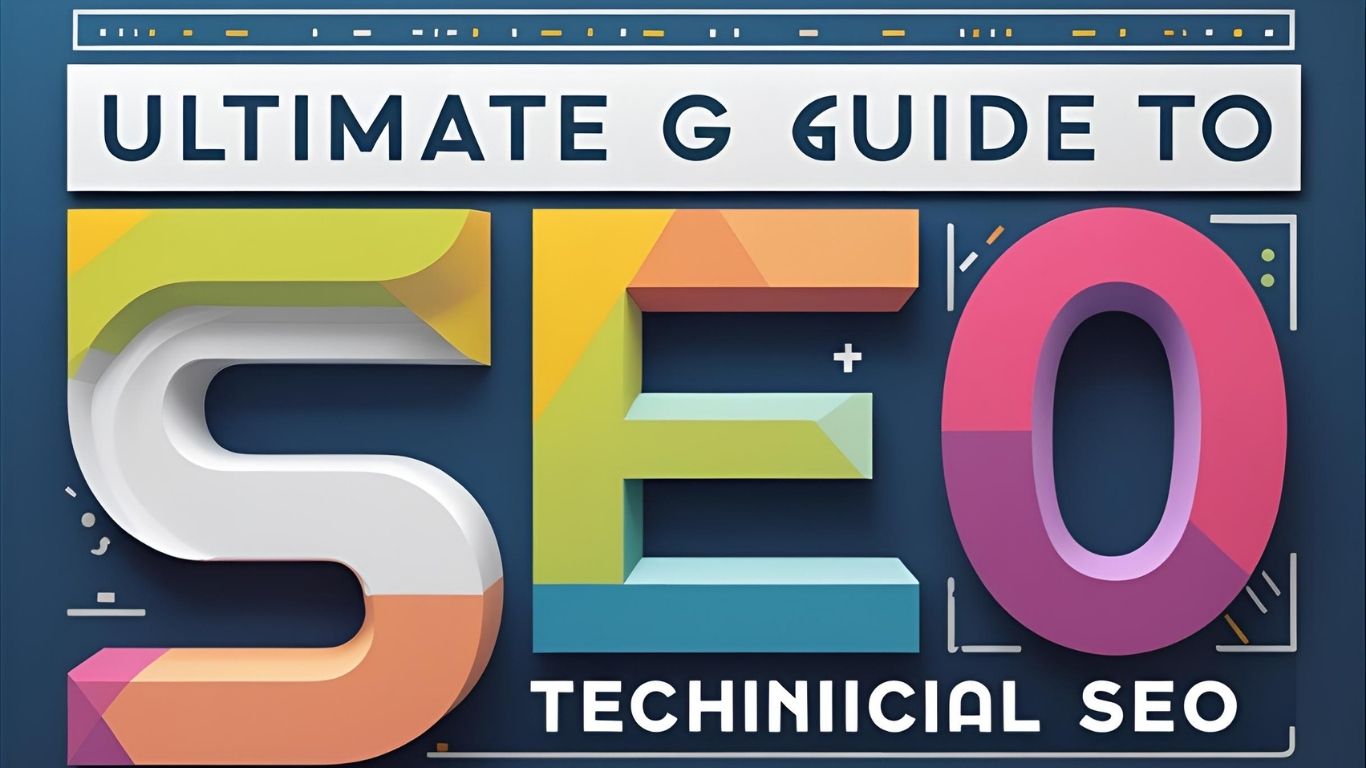Technical SEO Best Practices: Boost Your Site’s Speed and Indexing Today #TechnicalSEO #SiteSpeed #SEOPractices
Technical SEO Best Practices: How to Boost Site Speed and Indexing
Introduction: Understanding the Importance of Technical SEO Best Practices
If you’ve ever struggled to get your website noticed, you’re not alone. In the vast, ever-expanding ocean of the internet, even the most well-crafted content can disappear if it doesn’t follow the technical SEO best practices that ensure it gets crawled, indexed, and ranked. Technical SEO Best Practices are the foundation of any successful website. Without them, even the most visually stunning, content-rich websites will find themselves lost in obscurity.
But what exactly does technical SEO involve? It’s not about keyword stuffing or writing clickbait titles—no, this is about optimizing the nuts and bolts of your website so search engines can access and evaluate your content with ease. It’s the difference between a website that loads in seconds and one that makes visitors wait an eternity. It’s about ensuring that search engines can understand your site’s structure, prioritize its most important pages, and ensure that your hard work doesn’t go unnoticed.
In this article, we’ll take you on a journey to understand the technical SEO best practices that every website owner must follow, just like a gardener tending to their plants, ensuring that each is nurtured and well-positioned to grow. Let’s dive in!
What Is Technical SEO?
To truly appreciate technical SEO best practices, we first need to understand what it means. Think of your website as a house. Your content, design, and user experience are the furniture, the paint, and the decor, but your site’s technical infrastructure is like the foundation. Without a solid foundation, all the beautiful design in the world won’t matter.
Technical SEO is the process of improving your website’s backend architecture, focusing on elements that affect how search engines crawl and index your site. This includes ensuring that your website is easily accessible, loads quickly, and delivers valuable content in a way that search engines can understand.
Key Elements of Technical SEO
Crawlability: This refers to how easily search engines can “crawl” through your website. A site with poor crawlability will find its content hidden from search engines.
Indexing: After crawling, search engines need to index your site to display it in search results. If they can’t index your pages properly, they won’t appear in search results.
Site Speed: Websites that load slowly frustrate users and negatively impact rankings. Search engines, like Google, prioritize speed.
Mobile Optimization: With mobile devices accounting for a significant portion of web traffic, mobile-friendly websites are a must for SEO.
Structured Data: Adding structured data (like schema markup) helps search engines better understand your content, improving visibility.
Why Is Technical SEO So Important?
Without technical SEO best practices, your beautifully designed website may go completely unnoticed by search engines. Just as a book without a title may remain unopened on the shelf, your content will remain hidden if it’s not structured properly. By focusing on technical SEO, you ensure that your site is visible, accessible, and easy to understand for both users and search engines.
The Impact of Technical SEO on Ranking
Think of SEO like a race. While content and keywords might be the runners, technical SEO is the track. If the track is poorly designed, even the fastest runners won’t win. In the same way, if your site isn’t technically optimized, it won’t rank, no matter how great your content is.
The Importance of Site Speed in Technical SEO
Technical SEO best practices require that your website loads as quickly as possible. Have you ever tried to browse a site that took forever to load? Chances are, you abandoned it quickly. The same is true for users visiting your website. A slow-loading site leads to higher bounce rates and ultimately, lower rankings. Google has made it clear that site speed is a key ranking factor, and it plays a vital role in user experience.
How Site Speed Affects SEO and User Experience
Imagine trying to navigate through a dense forest. It’s frustrating, exhausting, and you might not reach your destination at all. That’s what a slow website feels like to your users. Google understands that users want fast, efficient results, which is why they prioritize speed.
Tools for Measuring Site Speed
Google PageSpeed Insights: This free tool provides a detailed analysis of your website’s speed and offers specific recommendations.
GTmetrix: Another powerful tool for analyzing site speed and pinpointing areas of improvement.
Pingdom: A tool that not only measures speed but also provides insights into how you can make your site faster.
Improving Site Speed: Step-by-Step
Now that we understand the importance of site speed, let’s explore some practical ways to improve it. Following technical SEO best practices can make a significant difference in your site’s performance.
Compress Images
Large image files are one of the main culprits behind slow-loading websites. Use tools like TinyPNG or ImageOptim to compress images without losing quality.
Minimize CSS and JavaScript Files
Minifying your CSS and JavaScript files by removing unnecessary spaces, comments, and characters will help your site load faster. Use tools like UglifyJS and CSSNano to do this.
H3: Enable Browser Caching
Caching allows your website to store certain elements locally on the user’s device, speeding up future visits. By enabling browser caching, you can improve your site’s performance, especially for repeat visitors.
Fixing Crawl Errors and Ensuring Proper Indexing
Your website’s visibility on search engines is directly tied to how well search engines can crawl and index it. A website with crawl errors is like a house with blocked doors—no matter how nice the inside is, no one can get in.
Identifying Crawl Errors
Crawl errors occur when search engines try to access a page and can’t. These errors can include 404 (page not found) or 500 (server) errors. Using Google Search Console can help identify these errors and pinpoint pages that need attention.
How to Fix Crawl Errors
Redirect 404 Pages: If a page has been deleted, redirect users to a relevant page to ensure they don’t hit a dead end.
Resolve Server Errors: Server errors can be more complex but should be addressed by your hosting provider.
Update Robots.txt: If certain pages shouldn’t be crawled, ensure that your robots.txt file is properly configured to block them.
Sitemaps: Essential for Efficient Indexing
A sitemap acts like a map for search engines, guiding them through your website and ensuring that important pages are indexed.
Creating and Submitting Sitemaps
XML Sitemap: This is the most common format. Use plugins like Yoast SEO or Google XML Sitemaps to generate an XML sitemap automatically.
HTML Sitemap: This is mainly for users. While not essential for SEO, it improves user experience by helping visitors navigate your site.
Maintaining Sitemaps
Regular Updates: Ensure that your sitemap reflects any changes to your website, like adding new pages or removing outdated ones.
Submit to Search Engines: Always submit your updated sitemap to Google Search Console to help speed up the indexing process.
Mobile Optimization: A Critical Component of Technical SEO
In the era of smartphones, mobile optimization is no longer optional. In fact, Google uses mobile-first indexing, meaning it predominantly uses the mobile version of your website for indexing and ranking. Without technical SEO best practices for mobile optimization, your site will be left behind.
Mobile-Friendly Websites: Best Practices
Responsive Design: Your website should automatically adjust to fit any screen size, whether it’s a phone, tablet, or desktop.
Mobile Page Speed: Ensure that your mobile site loads quickly. Mobile users expect fast loading times, just like desktop users.
Structured Data and Schema Markup: Enhancing Search Engine Understanding
One of the most underutilized technical SEO best practices is structured data. By adding schema markup to your pages, you essentially provide search engines with a detailed guide on how to interpret your content. This is like giving your readers a clear map to understand your book, making sure they don’t miss important sections.
What is Structured Data?
Structured data is a standardized format for providing information about a page and classifying its content. It helps search engines understand the context of your pages, which can lead to enhanced search results, such as rich snippets, knowledge graphs, and featured snippets.
Types of Schema Markup
- Article Schema: Helps search engines understand that your page contains an article, which can lead to a rich snippet in the search results.
- Product Schema: For e-commerce websites, this schema provides information about products, like price and availability.
- Local Business Schema: Essential for businesses with physical locations, providing details like your address, phone number, and opening hours.
- FAQ Schema: This schema displays questions and answers directly in the search results, improving visibility and engagement.
How to Implement Schema Markup
- JSON-LD: This is the recommended format for adding structured data to your website. Google prefers this over other formats.
- Test with Google’s Structured Data Testing Tool: After implementing schema markup, always test it with Google’s tool to ensure it’s working correctly.
Fixing Indexing Issues with Technical SEO Best Practices
Indexing issues are another significant challenge for many websites. If Google can’t index your pages, they won’t show up in search results, no matter how high-quality the content is. The goal is to ensure that all your important pages are indexed and available for search engines to display.
Diagnosing Indexing Issues
Common reasons for indexing issues include noindex tags, blocking pages through robots.txt, or faulty meta tags. Use Google Search Console to monitor and diagnose indexing problems.
Fixing Noindex Tags
If pages are unintentionally marked with the noindex tag, they will be excluded from search engine results. Ensure that your critical pages are not being blocked by this tag. You can easily check this using the “Inspect URL” feature in Google Search Console.
Robots.txt: Friend or Foe?
The robots.txt file helps control which pages search engines should or should not crawl. While it’s useful for blocking non-essential pages, be careful not to block important content inadvertently. Regularly check and update this file.
Advanced Technical SEO Techniques to Boost Your Site’s Performance
While following the basics of technical SEO best practices is crucial, there are advanced techniques that can take your website’s performance to the next level. Think of it as adding high-performance fuel to your car engine—these techniques help you go faster and more efficiently.
Server-Side Rendering (SSR)
Server-side rendering is an advanced technique that improves the performance of JavaScript-heavy websites. By rendering content on the server before sending it to the browser, you ensure that search engines can crawl and index your content without issues.
Leveraging JavaScript for SEO
JavaScript can be tricky when it comes to SEO. However, by ensuring that your JavaScript is properly implemented, you can achieve excellent SEO results without sacrificing user experience. Consider using frameworks like React or Angular to streamline this process.
Optimizing URL Structures
Clean, descriptive URLs make it easier for both users and search engines to understand the content of your pages. Avoid using long, complex URLs with unnecessary parameters. Use short, clear URLs that include relevant keywords.
The Role of HTTPS in Technical SEO Best Practices
In the world of technical SEO, security matters. HTTPS (HyperText Transfer Protocol Secure) encrypts the connection between your website and your visitors, ensuring that sensitive information is kept secure. Google has made it clear that HTTPS is a ranking signal, meaning secure sites are favored over non-secure ones.
Why HTTPS Matters for SEO
Not only does HTTPS protect your users’ data, but it also builds trust. Websites without HTTPS are marked as “Not Secure” in the browser, which can deter users from interacting with your site.
Migrating to HTTPS
If your site is still using HTTP, it’s time to migrate to HTTPS. Ensure that your SSL certificate is correctly installed, and don’t forget to update internal links and redirects.
User Experience and Technical SEO: A Symbiotic Relationship
While technical SEO best practices focus on how search engines interpret your website, user experience (UX) plays an equally critical role in rankings. Google values websites that not only perform well in technical aspects but also provide an excellent user experience.
How UX Impacts SEO
Websites that are easy to navigate, visually appealing, and quick to load naturally encourage visitors to stay longer and engage with content. This, in turn, reduces bounce rates and improves rankings.
Making Your Website User-Friendly
- Simple Navigation: Ensure your website’s navigation is intuitive, allowing users to find what they’re looking for easily.
- Mobile-First Design: With more users browsing on mobile, having a mobile-friendly site is essential for both user experience and SEO.
- Readable Content: Make your content scannable by using short paragraphs, bullet points, and clear headings.
Monitoring Technical SEO Progress with Analytics Tools
Implementing technical SEO best practices is just the beginning. To ensure your efforts are paying off, you need to monitor your site’s performance regularly. This is where analytics tools come in.
Google Search Console
Google Search Console is a powerful tool that provides insights into your website’s performance, including crawl errors, indexing status, and search queries. It’s essential for tracking technical SEO progress and identifying areas for improvement.
Google Analytics
Google Analytics allows you to track user behavior, identify page performance, and monitor bounce rates. Combining this with data from Google Search Console can provide a comprehensive view of how well your technical SEO is working.
Other Useful SEO Tools
- Ahrefs: Offers backlink analysis and site audit features to ensure your site is in top SEO shape.
- SEMrush: Provides keyword research, competitive analysis, and site audit tools to track SEO progress.
Conclusion: Mastering Technical SEO Best Practices
Mastering technical SEO best practices is the key to ensuring that your website is visible, accessible, and ranks well in search engines. It’s about setting up a solid foundation for your website, optimizing its performance, and ensuring it’s easy for search engines to crawl, index, and rank your content.
By following these best practices—improving site speed, fixing crawl errors, ensuring proper indexing, optimizing mobile experience, and using structured data—you’ll be well on your way to dominating the search results. Don’t wait—start optimizing your site with technical SEO today!
Bullet-Point Summary:
- Technical SEO Best Practices are essential for improving your site’s crawlability, indexing, and rankings.
- Site speed is a key factor in user experience and search engine rankings; slow-loading websites can lead to high bounce rates.
- Implementing technical SEO practices ensures that search engines can crawl your website and index content effectively.
- Tools like Google PageSpeed Insights, GTmetrix, and Pingdom are essential for measuring site speed and offering actionable insights.
- Compressing images, minimizing CSS/JavaScript, and enabling browser caching are proven ways to improve site speed.
- Crawl errors can hinder search engine indexing; using Google Search Console helps identify and fix errors.
- Sitemaps are essential for guiding search engines through your site, ensuring important pages are indexed.
- Mobile optimization is critical as Google uses mobile-first indexing for ranking.
- Regularly updating and submitting sitemaps ensures efficient and up-to-date indexing.
- Structured data (schema markup) helps search engines better understand your content and improves visibility.
- Proper server configurations and redirecting 404 pages are vital to fixing crawl errors.
- Implementing responsive design ensures your website adapts well on mobile devices.
- Minifying CSS/JS files and image optimization improves site speed and user experience.
- Mobile-first indexing means Google will prioritize your mobile website for ranking.
- The importance of technical SEO in ranking, visibility, and user experience cannot be overstated.
Frequently Asked Questions (FAQs)
1. What is the difference between technical SEO and on-page SEO?
Technical SEO focuses on the backend aspects of your website, such as site speed, crawlability, and indexing, while on-page SEO deals with content elements like keywords, meta tags, and internal linking. Both are essential for a well-rounded SEO strategy.
2. How can I improve my website’s load time?
To improve your website’s load time, focus on optimizing images, minifying CSS and JavaScript files, using browser caching, and leveraging a Content Delivery Network (CDN) to deliver content quickly to users from the nearest server.
3. Is mobile optimization important for SEO?
Yes, mobile optimization is crucial. With Google’s mobile-first indexing, a mobile-friendly website is a ranking factor. If your site is not optimized for mobile, it can significantly hurt your SEO efforts.
4. How often should I update my sitemap?
You should update your sitemap whenever you add new content or pages to your website or remove outdated pages. Regular updates ensure that search engines have the most current view of your site’s structure.
5. What is schema markup and why is it important for SEO?
Schema markup is a type of structured data that helps search engines understand the context of your content. It can enhance your website’s visibility in search results, leading to rich snippets, knowledge graphs, and other valuable features.
6. How do I fix crawl errors on my website?
To fix crawl errors, use Google Search Console to identify issues. Redirect broken links, resolve server errors, and ensure that pages are not blocked by your robots.txt file or meta tags.
7. Can a slow website affect my rankings?
Yes, a slow website can hurt your rankings. Google prioritizes fast-loading websites, as they offer a better user experience. Slow-loading pages can lead to higher bounce rates and lower engagement, negatively impacting SEO.
8. How does HTTPS affect SEO?
HTTPS is a ranking signal for Google. Websites with HTTPS are given preference in rankings because they provide a secure browsing experience. It also helps build trust with users, as they are more likely to interact with secure sites.
9. What are 404 errors and how do I fix them?
404 errors occur when a page cannot be found. To fix them, identify broken links and either redirect them to relevant pages or update the URL to the correct one. Regularly audit your site to ensure there are no broken links.
10. How can I test my site’s speed?
You can test your website’s speed using tools like Google PageSpeed Insights, GTmetrix, or Pingdom. These tools provide detailed insights into your site’s load time and offer suggestions for improving performance.
11. Why is structured data important for local SEO?
Structured data, such as Local Business schema, helps search engines better understand your business information like location, hours, and services. This leads to better local search visibility and can result in rich snippets showing up in local search results.
12. How can I improve my site’s crawlability?
To improve crawlability, ensure your website has a clean structure, use internal linking to guide search engines, and avoid blocking important pages with robots.txt or noindex tags. Regularly check for crawl errors in Google Search Console.
13. What tools should I use for technical SEO audits?
Some popular tools for technical SEO audits include Google Search Console, Ahrefs, SEMrush, and Screaming Frog. These tools can help you identify and fix common technical issues on your website.
14. How do I improve my site’s mobile SEO?
To improve mobile SEO, ensure your site is responsive, meaning it adjusts to different screen sizes. Optimize mobile load times, avoid pop-ups, and make sure all content is accessible on smaller screens.
15. Can technical SEO help with website security?
Yes, technical SEO can contribute to website security. Ensuring that your site uses HTTPS, has strong password protection, and is free from malware are important security measures that also benefit SEO by fostering trust with both users and search engines.
Explore These Valuable Resources
Google Search Console Help
Google Search Console
An essential tool for monitoring your site’s performance and fixing crawl errors.
PageSpeed Insights – Google
PageSpeed Insights
Google’s tool for analyzing your site’s speed and offering actionable optimization tips.
Moz: Technical SEO Checklist
Moz – Technical SEO Checklist
A thorough checklist to follow for boosting your site’s technical SEO.
Schema Markup Guide – Schema.org
Schema.org
The go-to resource for learning about structured data and implementing schema markup.
GTmetrix Site Speed Tool
GTmetrix
A detailed tool for analyzing your website’s speed and identifying areas for improvement.
Ahrefs Blog – SEO Tips
Ahrefs Blog
Learn from one of the most authoritative SEO platforms for advanced techniques and trends.
Screaming Frog SEO Spider Tool
Screaming Frog SEO Tool
A powerful tool for crawling websites and identifying technical SEO issues.
Yoast SEO Blog
Yoast Blog
Expert tips on SEO from one of the leading plugin developers for WordPress.
W3C Validator – Check for HTML Errors
W3C Validator
A free tool to ensure your website’s HTML is error-free and follows proper standards.
SEMrush – Technical SEO Guide
SEMrush Technical SEO
A deep dive into the best technical SEO practices using SEMrush’s tools.
Unlock More Knowledge with These Links
Google’s Mobile-Friendly Test Tool
Mobile-Friendly Test
Ensure that your site works well on mobile devices, a critical factor for modern SEO.
Content Delivery Network (CDN) Explained
What is CDN?
Learn how CDNs work to speed up your website and improve SEO.
How to Improve Site Security with HTTPS
HTTPS Importance
Understand the significance of HTTPS for SEO and site security.
Google’s Mobile-First Indexing
Mobile-First Indexing
A detailed guide from Google explaining why mobile-first indexing matters.
How to Avoid Crawl Errors
How to Avoid Crawl Errors
Learn about common crawl errors and how to fix them for optimal SEO performance.
Master the Topic with These Essential Resources
SEO Audit Guide – Moz
Moz SEO Audit Guide
A comprehensive guide on how to conduct an SEO audit to improve your site’s performance.
Google Search Quality Evaluator Guidelines
Quality Evaluator Guidelines
Learn directly from Google on how they evaluate search quality, crucial for understanding ranking factors.
Yoast SEO: Advanced Guide
Yoast Advanced Guide
Dive deeper into SEO with this advanced guide from Yoast, a trusted SEO plugin developer.
Search Engine Journal: Technical SEO Trends
Technical SEO Trends
Stay updated with the latest technical SEO trends and insights from industry experts.
Discover More with These Expert Resources
Google’s Core Web Vitals
Core Web Vitals
A comprehensive guide from Google explaining the key performance metrics affecting user experience and rankings.
W3C Web Accessibility Initiative
W3C Web Accessibility
Learn about accessibility standards for your website to ensure compliance and a better user experience.
SEO and Site Speed Guide – Neil Patel
Neil Patel SEO Guide
A blog post by Neil Patel explaining the connection between site speed and SEO.
How to Improve Your Site’s SEO with Structured Data
Improving SEO with Structured Data
This guide explains how to implement structured data for better SEO and visibility in search results.
These curated links will provide you with valuable resources that can enhance your understanding of technical SEO best practices and help you implement them effectively on your website. With these expert guides, you’ll be well-equipped to tackle SEO challenges and boost your website’s performance.
Recommended Blog
For further insights into the ever-evolving world of SEO, check out Rizwan’s Blog. You’ll find a treasure trove of helpful articles, expert tips, and strategies that will keep you ahead in the digital marketing game.
Explore Our Services, Portfolio, and Shop
If you’re looking to take your website to the next level with expert SEO strategies, consider browsing our services. We specialize in a wide range of digital marketing services tailored to meet your specific needs.
For inspiration and examples of our successful projects, visit our portfolio. See how we’ve helped businesses enhance their online presence through innovative solutions.
If you’re ready to start optimizing your website and need high-quality products, head over to our shop for a variety of tools and resources to kickstart your SEO journey.
Stay Connected with Us
We love connecting with like-minded professionals and businesses on LinkedIn. Feel free to connect with us on LinkedIn to discuss SEO, digital marketing, and more!






